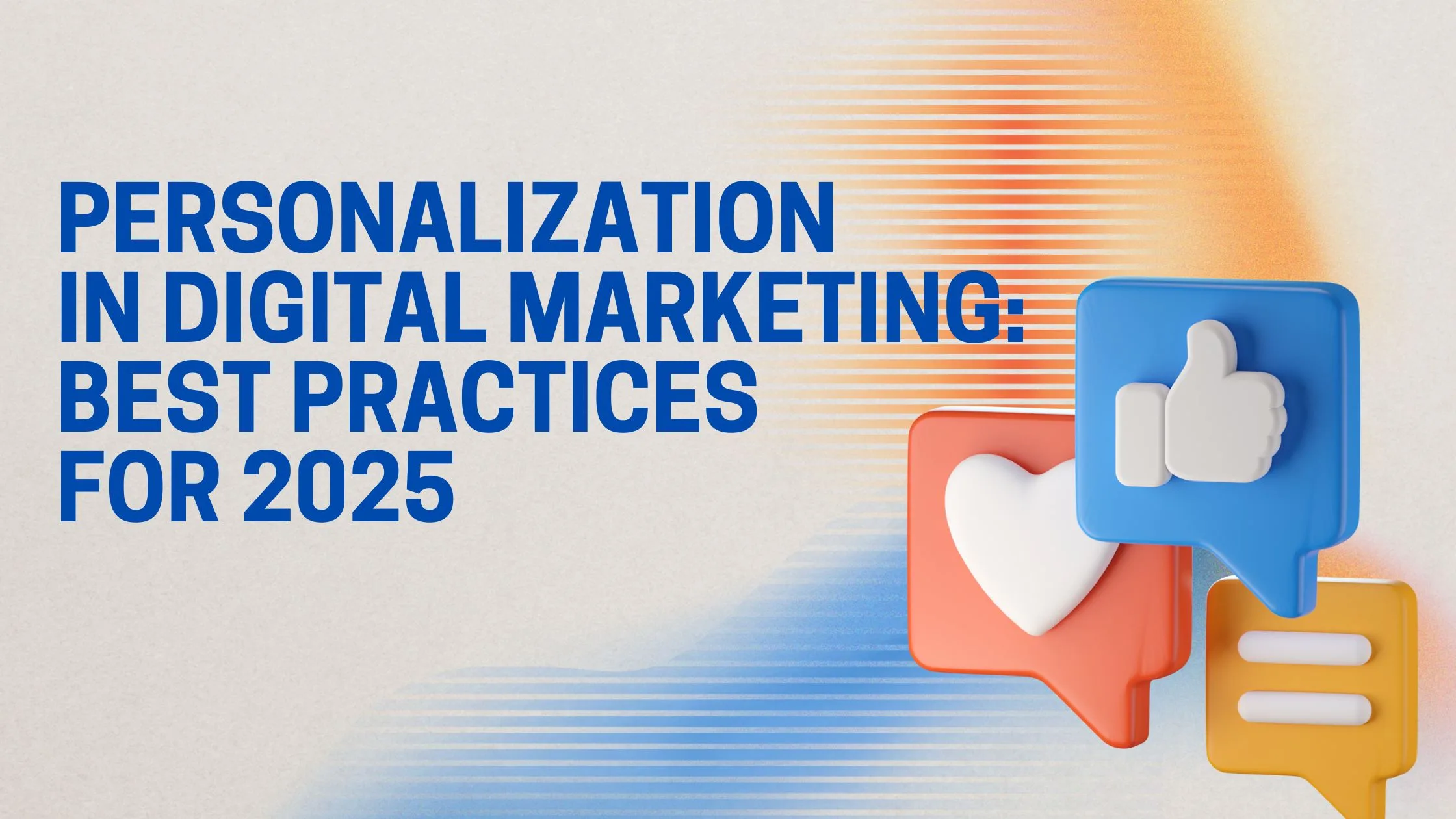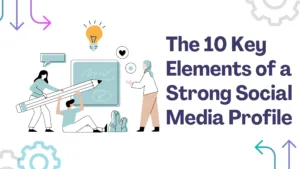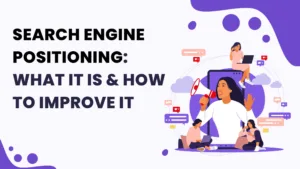Personalization in marketing can contribute up to 25% of a brand’s overall revenue. Customers are far more likely to interact with messages, advertisements, and experiences that align with their preferences and needs.
Implementing effective personalization strategies is crucial for increasing engagement and boosting conversion rates.
Discover how personalization works and why it will play a vital role in enhancing your digital marketing approach in 2025.
What Is Personalized Marketing?
Personalized marketing is the practice of leveraging customer data to deliver tailored messages and experiences suited to each stage of the buyer’s journey.
There are several ways to categorize marketing personalization based on the data used:
➤ Behavioral Personalization: Driven by customer actions, such as previous purchases, browsing patterns, or email responses.
➤ Contextual Personalization: Adjusts communication according to the customer’s current situation, including their sales funnel stage or geographic location.
➤ Demographic Personalization: Utilizes details like age, gender, or income to create targeted messages for specific audience groups.
Examples of Personalization in Digital Marketing
In digital marketing, personalization varies by brand and may include:
- Product Recommendations: Suggesting complementary products based on a customer’s recent purchases.
- Custom Rewards: Providing perks that match a customer’s interests, such as special discounts or loyalty benefits.
- Tailored Emails: Sending messages designed around individual needs, like offers based on past buying behavior or location-specific promotions.
- Shopping Filters: Letting customers refine their browsing with filters suited to their preferences, while gathering insights for better targeting.
- Trial Offers: Giving free trials in return for basic details or survey participation, allowing for future personalized outreach.
- Name-Based Products: Offering items customized with the buyer’s name to create a unique and personal experience.
- Personalized Coupons: Issuing discount codes tailored to demographics or spending patterns to drive repeat sales.
- Adaptive Websites: Using live data to adjust website content according to each visitor’s behavior and preferences—for example, showing a travel seeker destinations they recently explored.
- Personalized Social Media Marketing: Using automation and targeting to deliver specific offers, such as birthday specials or location-based deals.
Why Personalization Matters in Digital Marketing
Personalized experiences foster repeat purchases, improve customer retention, and boost average order value. Research shows tailored strategies can lift revenue by up to 15%.
Conversely, failing to personalize—such as sending generic ads—annoys 63% of shoppers, and 62% would stop supporting a brand that doesn’t cater to them (Statista).
While personalization requires skilled teams, advanced tools, and thoughtful planning—which can be costly—the return on investment often exceeds the expense.
6 Benefits of Digital Marketing Personalization
Personalization has long been a driving force behind effective digital marketing. It can lower customer acquisition costs by up to 50%, boost revenue by 5–15%, and increase marketing ROI by 10–30%.
Beyond financial returns, personalization can:
- Encourage repeat purchases
- Strengthen brand engagement
- Build loyalty and improve retention
- Enhance omnichannel strategies
- Improve lead generation
- Support stronger retargeting efforts
1. Drive Repeat Purchases
Tailored shopping experiences encourage loyalty and motivate customers to buy again. Studies show 57% of consumers are more likely to spend with brands that deliver personalized interactions (Twilio).
2. Increase Brand Engagement
By targeting specific audience segments with relevant messaging, brands can deepen connections. Worldwide, 54% of marketers report that personalization has increased brand engagement, resulting in better conversion rates and stronger campaign responses (eMarketer).
3. Boost Loyalty Through Transparency
Customers appreciate convenience, but trust is essential. While 48% value personalized experiences, 40% doubt brands’ ethical use of their data, and 30% avoid sharing it entirely (KPMG). Transparency is key—clearly explaining what data is collected and its benefits increases willingness to engage. Forrester reports that 31% would share data for monetary rewards, and 22% would do so for loyalty points.
4. Improve Omnichannel Marketing
Today’s customers expect consistency across all touchpoints, whether in-store, via apps, or on social media. Personalization ensures each interaction is relevant and context-driven, improving engagement and enhancing the overall omnichannel experience.
5. Enhance Lead Generation
Personalized marketing fosters trust by showing customers you understand and can address their needs. This trust encourages information sharing, leading to higher-quality leads and stronger relationships.
6. Strengthen Retargeting
Many customers take time before making a purchase. Personalization keeps them engaged across multiple interactions, helping move them closer to conversion when they are ready to buy.
Personalization Trends in Digital Marketing to Watch in 2025
From AI innovations to privacy-first strategies, understanding upcoming trends can help you create more effective personalized campaigns. Here are the key developments to follow in 2025:
1. Hyper-Personalized Experiences
Hyper-personalization uses AI, machine learning, and real-time data to deliver highly specific experiences. By analyzing customer actions and preferences, it provides relevant content, products, or services at the right moment—such as tailored store interactions or targeted ads that boost satisfaction and sales. This approach requires significant consumer data and advanced systems, so proper infrastructure is essential.
2. AI-Driven Personalization
AI can examine purchase history, browsing activity, and preferences to refine offers for each individual. This enables brands to match product suggestions and pricing to customer needs, creating a more relevant shopping journey.
3. Predictive Personalization
Predictive personalization uses advanced machine learning to anticipate future customer needs based on data patterns. This ensures brands can deliver timely, relevant content or offers that adapt to evolving preferences.
4. Balancing Privacy and Personalization
With rising privacy concerns and stricter global regulations, brands must combine personalization with strong data protection. First- and zero-party data—information willingly provided by customers—offers a secure, trust-building alternative to purchased third-party data. Staying compliant builds credibility and protects customer relationships.
5. Mobile Experience Personalization
As mobile commerce grows toward an expected $3.4 trillion by 2027 (Forbes), shoppers want convenience, instant information, and personalized interactions. Brands can use app analytics to send targeted push notifications for sales, promotions, or launches, encouraging engagement and repeat purchases.
6. Facial Recognition Technology
With accuracy rates near 99.5%, facial recognition can track foot traffic, study shopping behavior, and gather demographic insights. This helps optimize product placement and create more tailored in-store experiences.
3 Best Practices for Personalizing Digital Marketing
Implementing personalized marketing effectively starts with a customer-first approach. People should clearly see the value in sharing their data and understand how it improves their experience.
Trust is the foundation—be transparent, and engagement will follow. Here’s how to ensure your personalization efforts work:
1. Respect Boundaries
Personalization is powerful, but pushing too far can create discomfort.
- Acknowledge Privacy Concerns: Avoid overly detailed or intrusive messaging. Keep personalization relevant and helpful.
- Focus on Key Moments: Apply personalization where it has the most impact, such as customer support or in-store visits, rather than bombarding users with constant targeted content.
- Provide Opt-In Choices: Give customers control through clear options like newsletter subscriptions, loyalty programs, or push notifications.
2. Earn Trust First
Customers share data more freely with brands they trust. Build that trust by offering smooth, reliable experiences and responsive support. Avoid personalizing every interaction immediately—wait until after a purchase or when a relationship has developed. Each positive engagement strengthens confidence and increases willingness to share information.
3. Safeguard Data
Protecting customer information is essential to maintain credibility and comply with regulations.
- Adhere to Data Protection Standards: Follow laws and industry requirements, and explain how data is stored and used.
- Get Explicit Consent: Use clear opt-ins for personalization campaigns and allow easy opt-outs.
- Be Transparent: Make your privacy policy visible and easy to understand.
- Collect Only What’s Necessary: Request minimal information to reduce risk and avoid seeming intrusive.
Frequently Asked Questions (FAQs) on Digital Marketing Personalization
Q1. What is personalization in digital marketing?
Personalization in digital marketing is the practice of tailoring content, offers, and experiences to individual customers based on their preferences, behaviors, and data.
Q2. Why is personalization important in marketing?
It improves customer engagement, builds loyalty, increases conversions, and enhances overall brand relationships by making the customer feel valued and understood.
Q3. How can brands avoid overstepping in personalization?
By respecting privacy, avoiding overly intrusive details, and only using personalization at meaningful moments, such as post-purchase follow-ups or loyalty rewards.
Q4. What kind of customer data is typically used for personalization?
Common data includes purchase history, browsing behavior, location, demographic details, and preferences—collected with customer consent.
Q5. How do brands build trust for data sharing?
They can deliver consistent, positive customer experiences, maintain transparent communication, and clearly explain how data will be used and protected.
Q6. What are the risks of collecting too much customer data?
Over-collection can make customers uncomfortable, increase the risk of data breaches, and potentially violate privacy regulations.
Q7. How can businesses ensure customer data is secure?
By following strict data protection protocols, complying with laws like GDPR or CCPA, encrypting sensitive information, and limiting access to authorized personnel only.
Q8. What’s the difference between first-party, second-party, and third-party data?
- First-party data: Information collected directly from customers (e.g., via your website or app).
- Second-party data: Data shared by a trusted partner.
- Third-party data: Purchased from external sources.
Q9. How can small businesses implement personalization effectively?
They can start with simple strategies like personalized email campaigns, targeted social media ads, and tailored product recommendations based on purchase history.
Q10. Does personalization always require advanced technology?
Not always—while AI and automation can enhance personalization, even basic strategies like segmenting email lists can deliver effective results.




